Onventis 2025.8
The new Onventis 2025.8 release contains various enhancements, improvements, and bug fixes. Check out the complete list below!
Beta release date: Friday,
Release date: Tuesday,
Procure-to-pay
New Additional Field Type “Write-Protected” Introduced in Catalog Management
Why this change?
Buyers needed a way to define catalogue-level additional fields that can be displayed to suppliers but remain non-editable when transferred to downstream objects such as RFQs. Previously, all supplier-visible fields were either fully editable or hidden, leaving no option for read-only visibility.
What’s new?
A new field type “Write-Protected Field” is now available under: Catalog → Article → Additional Field → Field property supplier.
When a catalogue item containing a write-protected field is transferred through a demand position to another object (such as RFQ), suppliers can see the field value but cannot modify it.
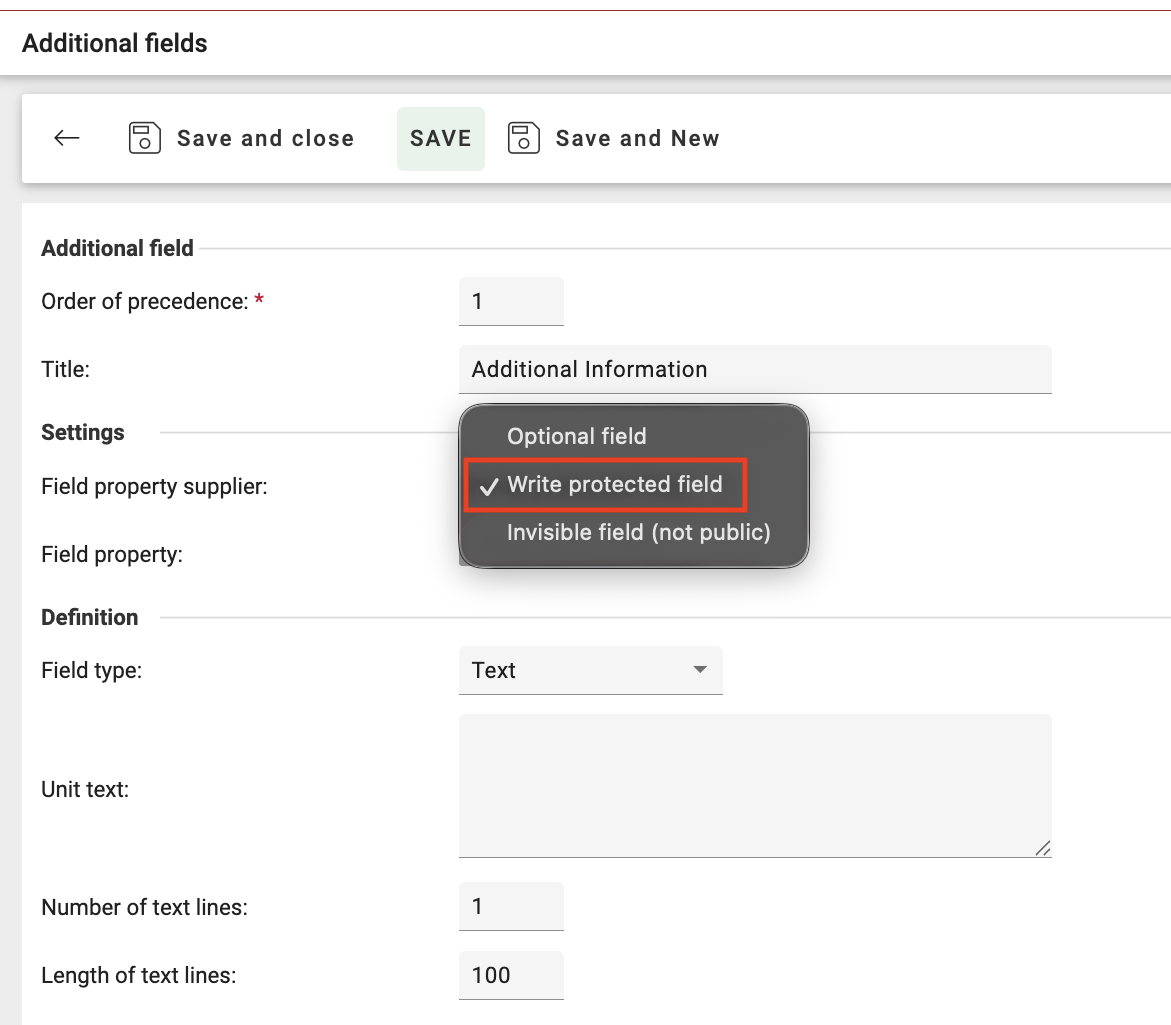
Additional details:
The behavior matches the existing write-protected logic available in: Configuration → Operational Purchasing → Additional Fields (header/line item level).
This feature applies automatically to all future catalog-to-RFQ data transfers where the field property is set as “Write-Protected.”
Cost Tasks Available for Import and Export
Why this change?
Previously, Cost Tasks (used as account allocation objects) had to be created and updated manually, which made data maintenance time-consuming and prone to inconsistencies between systems.
What’s new?
Cost Tasks can now be imported and exported via BC Jobs using Excel or CSV files.
The new adapter supports fields such as internal number, title, description (multi-language), supplier visibility, and fixed asset indicators.
A new “Delete not in import” option allows cleaning up outdated Cost Tasks (disabled by default).
Template for import: CostTask_Template.xlsx and example configuration attached below for excel import:


An Export button has been added in the interface to easily download the current Cost Task list.

Additional details:
This enhancement simplifies Cost Task management, ensures consistent data across systems, and aligns import/export handling with other BC Job–based master data processes.
Enhanced Transfer Functionality for Demand Positions with Two-Step Selection Flow
Why this change?
Previously, the Transfer button in demand positions allowed users to pass only supplier information to other positions. Approvers had limited control over which data fields were transferred and to which positions they were applied. This caused unnecessary manual editing and inconsistent data handling across related demand items.
What’s new?
The transfer process has been completely redesigned into a two-step flow within a single page, giving users full control over both the content and the scope of the transfer:
Step 1: Select Fields to Transfer
Users can now choose which data fields (such as Cost Center, Delivery Date, Material Group, Project, etc.) they want to transfer from the source demand position.
All available fields are displayed with checkboxes in a clear Field | Value table. For example:
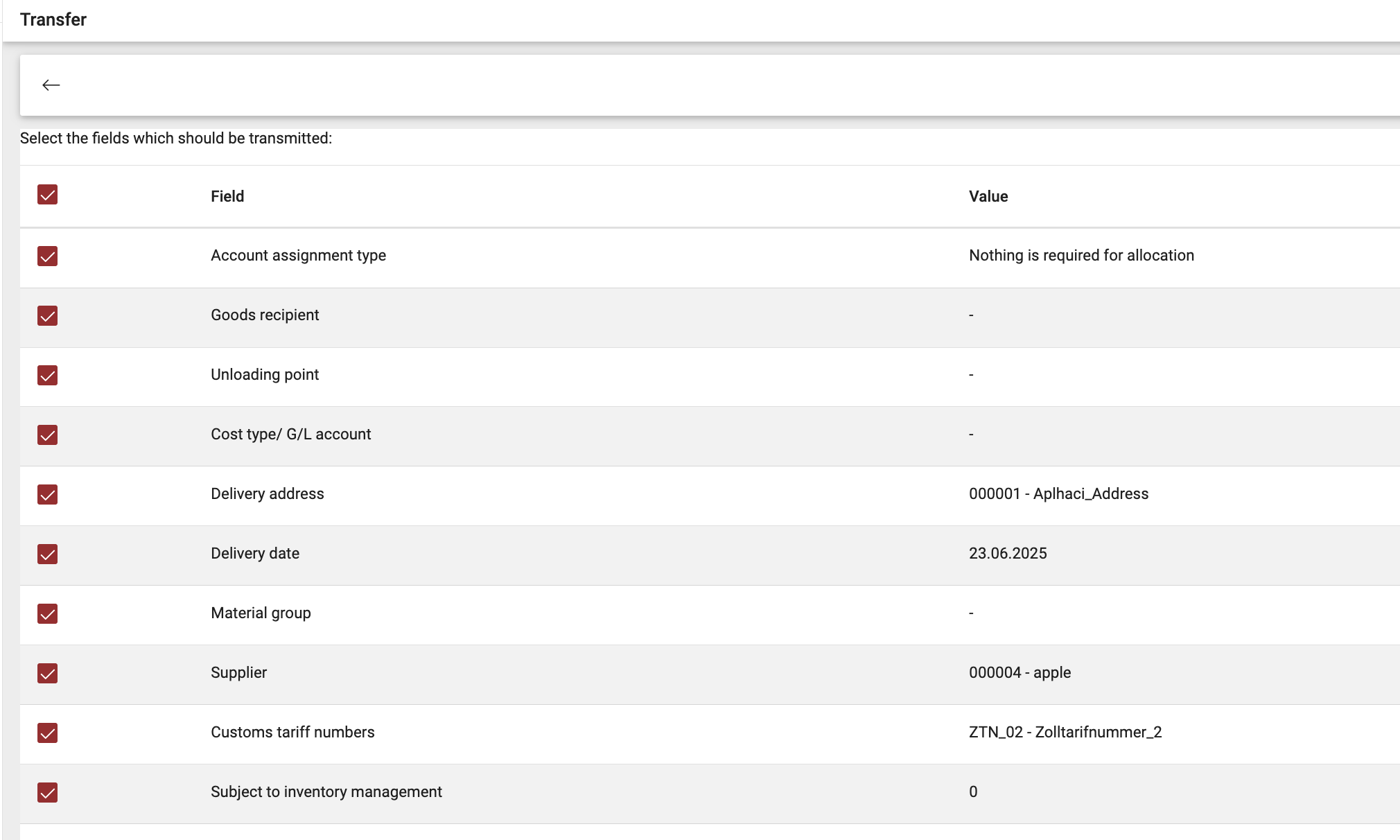
Step 2: Select Target Demand Positions
After selecting the fields, users can choose which demand positions should receive the values.
The page includes filters to show either:
Same Requirement Tracking Number (default) –> positions from the same demand number, or
All Requirement Tracking Numbers –> shows position all (same + different) demand numbers that are still editable.
Users can multi-select positions, and the system automatically copies only the selected field values.

Additional details:
Aligns with existing transfer logic used in Purchase Orders and Shopping Carts.
No configuration changes required.
User Assignment to Service Approval Workflow
Why this change?
Previously, Service Approval Workflows could only be assigned indirectly through the Order Processing configuration. This limited flexibility for organizations that wanted to assign service approval responsibilities directly to specific users.
What’s new?
A new dropdown field has been added to the User Edit view, allowing administrators to directly assign a Service Approval Workflow to a user.
The User List Excel/CSV export and import now include a new column at the end for Service Approval Workflow assignment, enabling easier bulk updates.
When a new user is created based on a Template User, the Service Approval Workflow assignment from the template is automatically transferred.
The change is available under User Administration → Standard Assignments
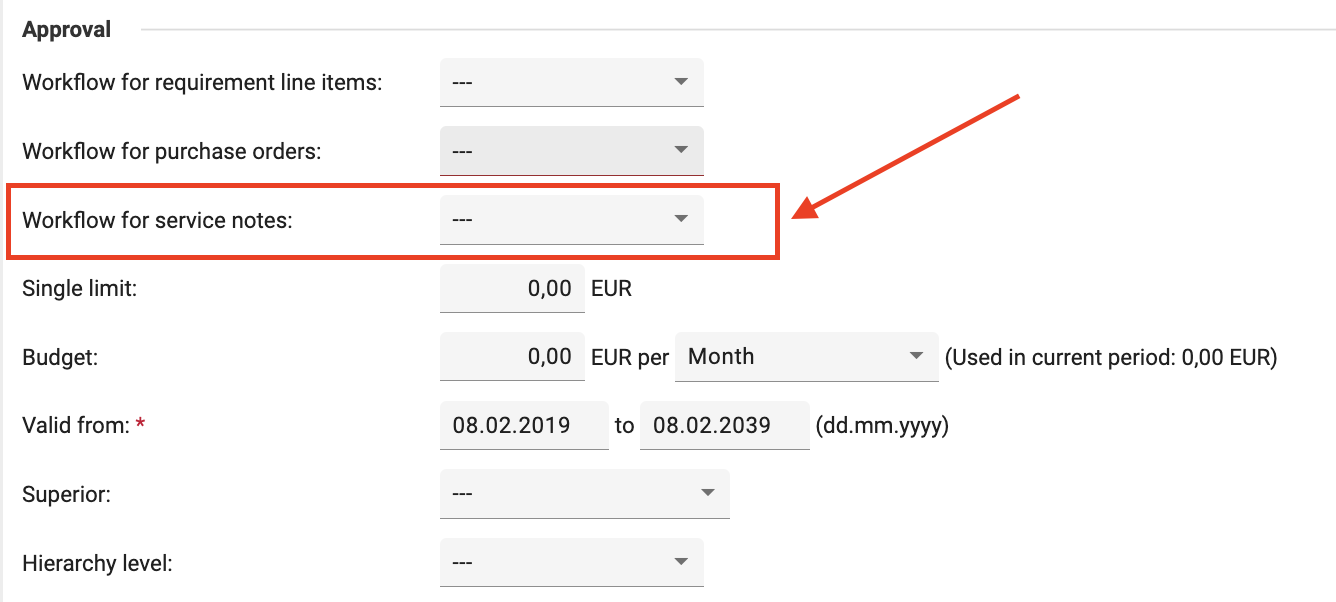
Additional details:
This improvement simplifies user onboarding and provides finer control over service approval responsibilities.
Extended Service Approval Workflow Criteria
Why this change?
Previously, the service approval workflow was limited in its configurable approval criteria compared to other workflow types. This led to inconsistent approval logic and limited flexibility when defining approval rules for service-related documents.
What’s new?
The Service Approval Workflow now supports the same approval criteria as other approval workflows, ensuring consistent configuration options across all workflow types.
The assigned Service Approval Workflow on the user level now has the highest priority (Priority 1).
If no service approval workflow is assigned to the user, the system continues to use the approval workflow defined in the Order Processing workflow (Priority 2).
All new approval criteria are now also recorded in the history change log page, allowing users to track changes transparently.
Additional details:
This enhancement ensures a unified experience and consistent approval logic across all approval workflow types (Order, Demand, and Service).
Smaller Enhancements
To enhance consistency and clarity in daily operations, two small usability improvements have been introduced:
In the Material Group selection dialog of purchase orders, the “New” button is now automatically hidden during selection mode. This prevents confusion by making it clear that only existing material groups can be chosen in this context.
In catalog article references, when importing with ReferenceType = others, the Miscellaneous tab now displays only the explicitly defined ReferenceArticleNr. Variants of source or referenced articles are no longer shown unless they are directly defined in the import file, ensuring reference relationships are displayed exactly as configured.
Both changes contribute to a cleaner interface and more accurate data representation without requiring any configuration adjustments.
Interfaces Related Key-Update
Only Offered Positions Are Now Exported to SAP During “Accept Bid”: When accepting a supplier offer, only positions marked as “Offer this position” or “Offer this position as free of charge” are now exported to SAP. Positions marked as “Do not offer this line item” are excluded from the export to prevent incorrect transfer of zero-price items and ensure consistent, accurate pricing data in SAP.
New Parameter to Export GR Information During Manual Order Closure: A new configuration parameter now enables the export of the
<NoMoreGr>flag when manually closing a purchase order. When activated, the system includes<NoMoreGr>X</NoMoreGr>in the export for all positions that are not marked as “Final delivered.” Additionally, a confirmation message is now displayed once the export completes successfully, improving transparency in order closure handling.Enhanced Supplier Bank Data Import with Support for
<-ONV-E1LFBKM>Segment: We now supports importing supplier bank details from the extended SAP segment<-ONV-E1LFBKM>. When this new segment is included in the supplier master data transfer, the system prioritizes it to ensure complete and accurate bank information is imported. If the<-ONV-E1LFBKM>segment is not provided, the standard<E1LFBKM>segment continues to be used as a fallback, ensuring backward compatibility with existing SAP integrations.New
Z_LIEFERAVIS(Order) Export for Supplier-Confirmed Order Changes: A new export logic now supports the generation ofZ_LIEFERAVISmessages for order changes confirmed by suppliers. This ensures that when customers order direct materials, each supplier confirmation or change triggers a properZ_LIEFERAVISdocument exchange, closing the gap previously missing for this scenario and keeping the communication between Onventis and SAP fully aligned.
Supplier Management
Supplier Status Mapping for Qualification Management Triggers Approval Workflow
Overview:
Previously, when a Supplier Status Mapping was configured (assignment of Qualification status to Supplier status), any automatic Supplier status updates triggered by change in qualification status bypassed the Supplier Approval workflow.
With this enhancement, those automatic updates now follow the same Supplier approval workflow set for the supplier status update, ensuring consistent authorization and auditability.
What’s New:
When a Qualification Status (on Organization or Organizational Unit level) updates the Supplier Status via status mapping, a Work Item is now created to track the change in supplier status change.
If a workflow configuration exists, the Supplier Approval Workflow (type Update) is triggered automatically for both scopes, Organization or Organizational Unit.
The approver of a Supplier work item can decide whether to approve or reject the change in supplier status
The source of update is shown as ‘Status mapping (Supplier Qualification)’
Why this change?
This enhancement ensures that all supplier status changes, whether manual or automatic, are processed through the same approval and tracking mechanisms. It strengthens control, transparency, and compliance in Supplier status management.
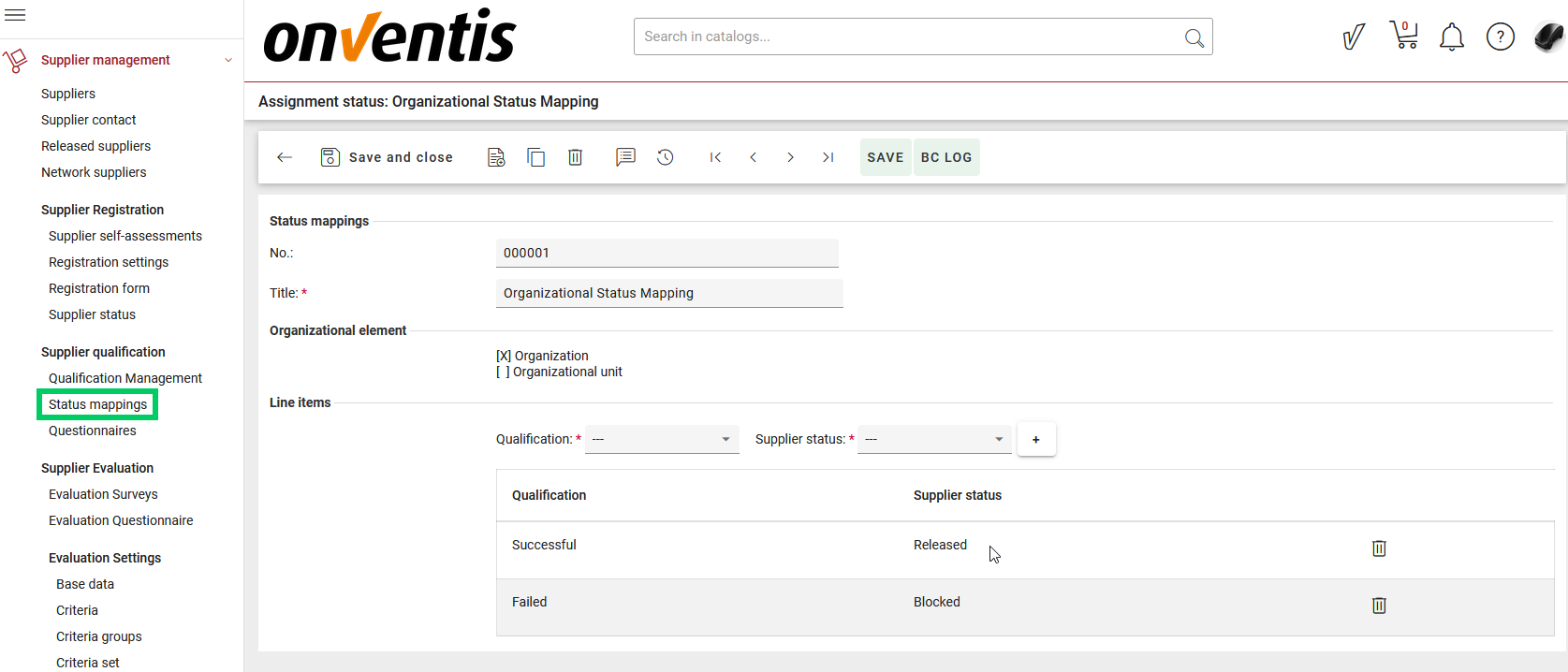
Status mappings configuration: Assignment of Qualification status to Supplier status
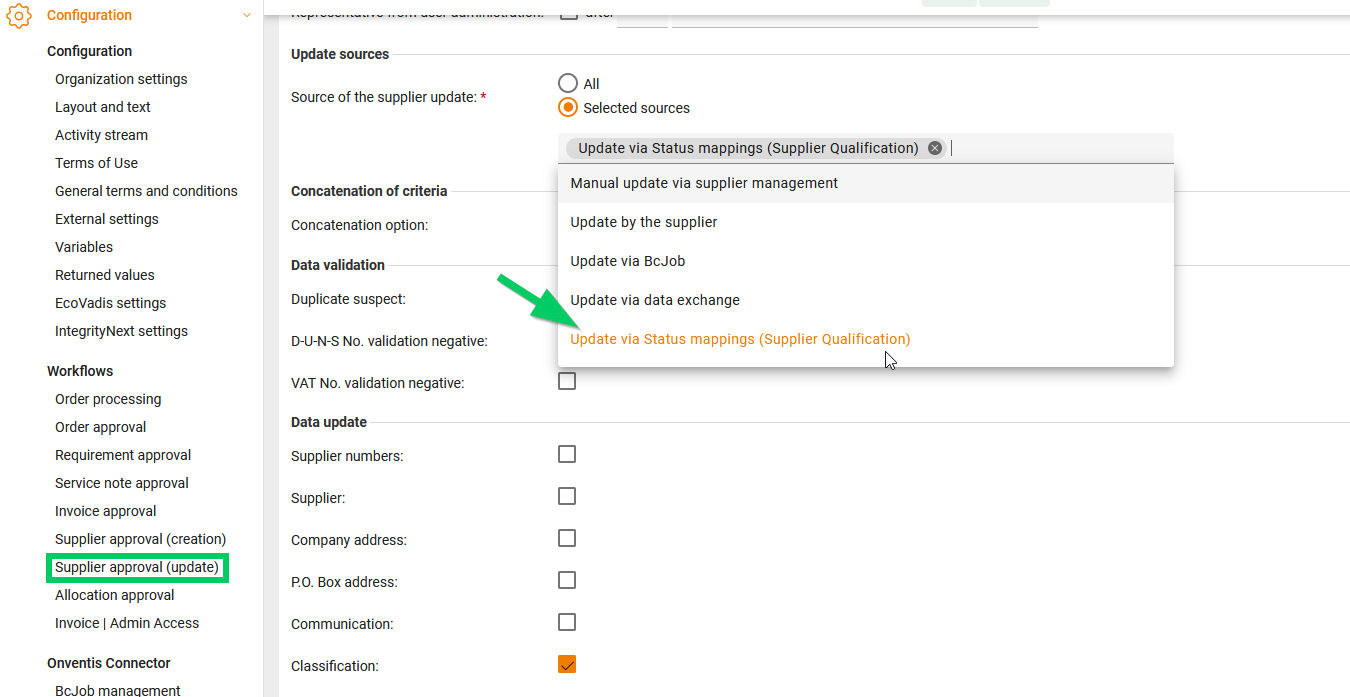
Supplier approval workflow configuration: A new source for the Supplier update can be selected
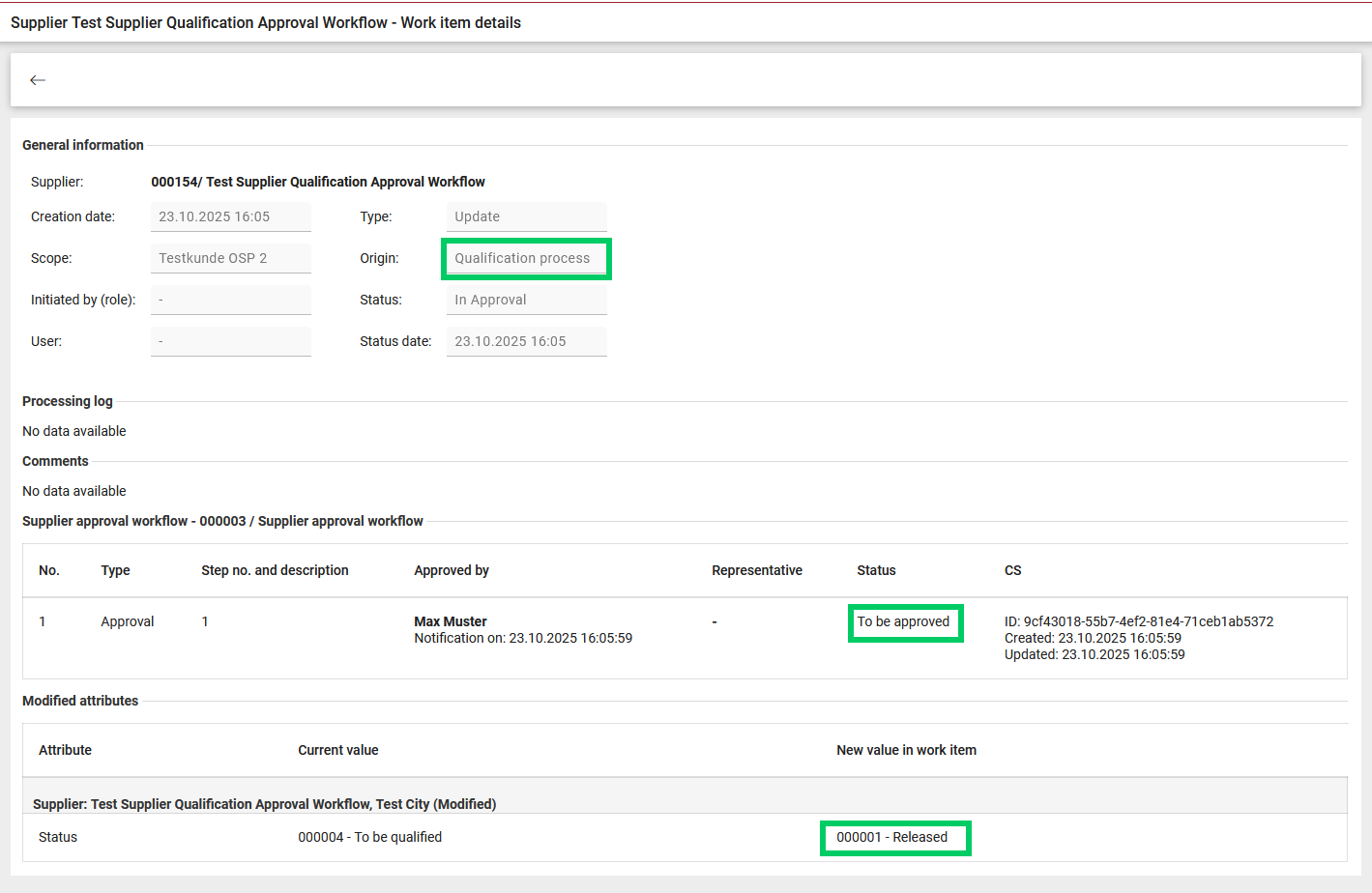
Supplier Work Item: The approval step is activated for Supplier status change triggered by Qualification Process
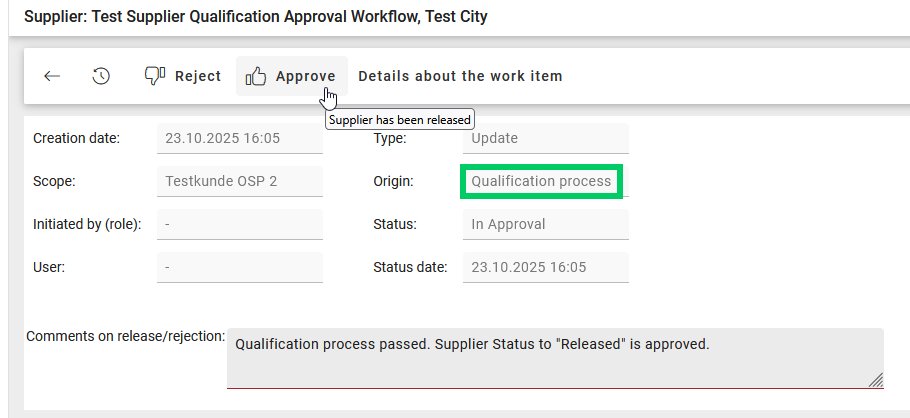
The approver can either approve or reject the Supplier status change
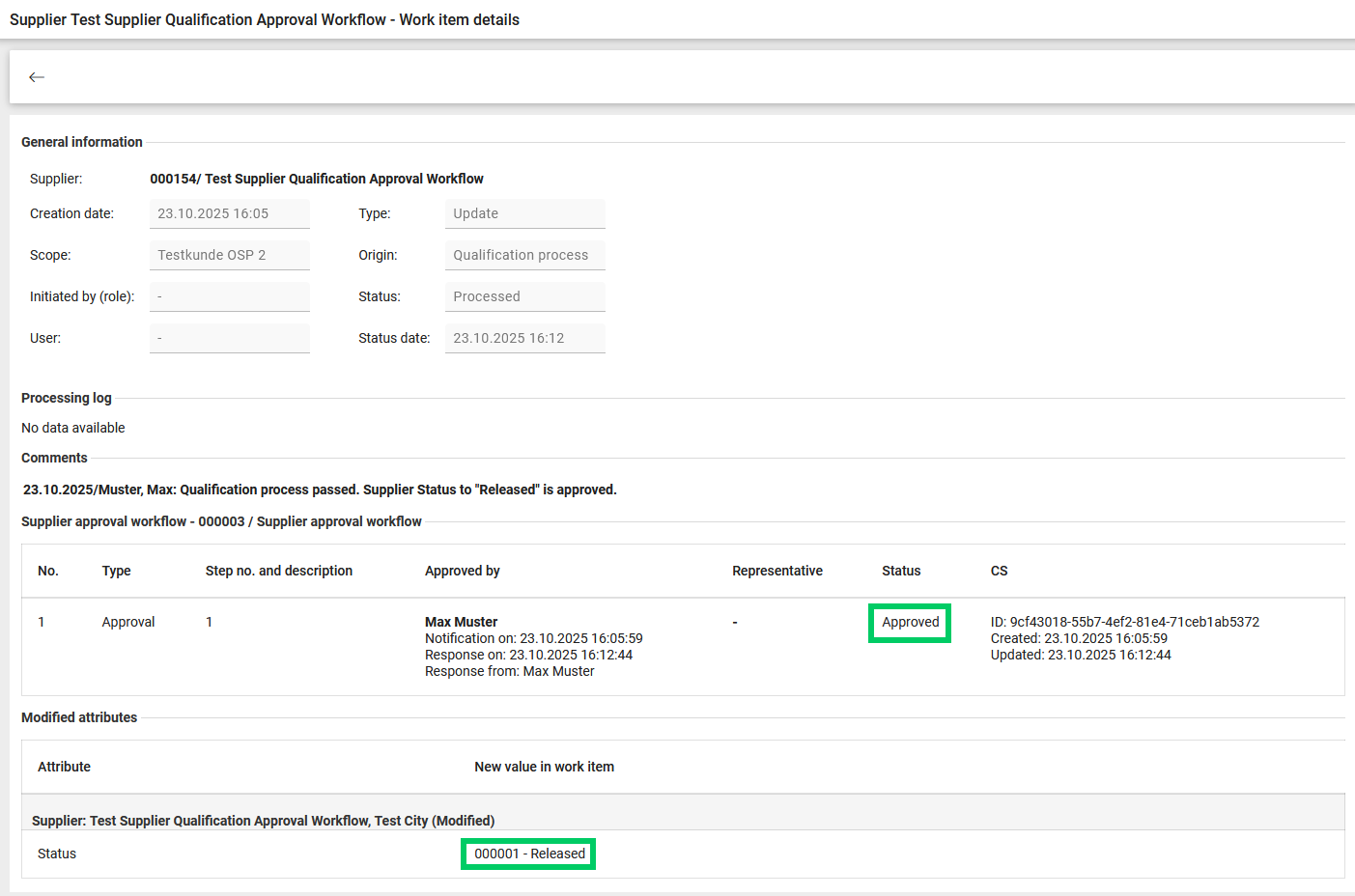
The supplier status change via Qualification process was approved and is logged at the Supplier work item
Log Username of the Supplier who Responded to Qualification Questionnaire
Overview:
We’ve enhanced the Qualification Management module to give Buyers greater visibility into who submitted qualification responses. This improvement helps ensure better traceability and easier communication with suppliers.
What’s New:
A new event called “Questionnaire answered” is now displayed in the History Log.
The Questionnaire title is recorded in the Details column.
The Username (First Name, Last Name) of the supplier user who submitted the response is now visible in the Username column.
Benefit:
Supplier Managers can now easily identify and reference the supplier user who completed a qualification questionnaire, ensuring faster follow-up and improved accountability.
Bug fix: Allow to add suppliers to a Qualification process even with expired standalone qualification requests
Overview:
Previously, Supplier Managers could not add a supplier to a qualification process if the system detected that the supplier had an expired automated standalone qualification request.
This update removes that limitation, making it easier to manage qualification processes efficiently.
What’s New:
Suppliers can now be added to a Qualification Process if they have an existing Standalone Qualification Request in Expired status.
The system will recognize that the expired standalone request does not block the supplier from being re-invited within the same scope.
Benefit:
Buyers can now reinitiate qualification processes for suppliers whose previous standalone requests have expired — saving time and ensuring smoother qualification cycles.
